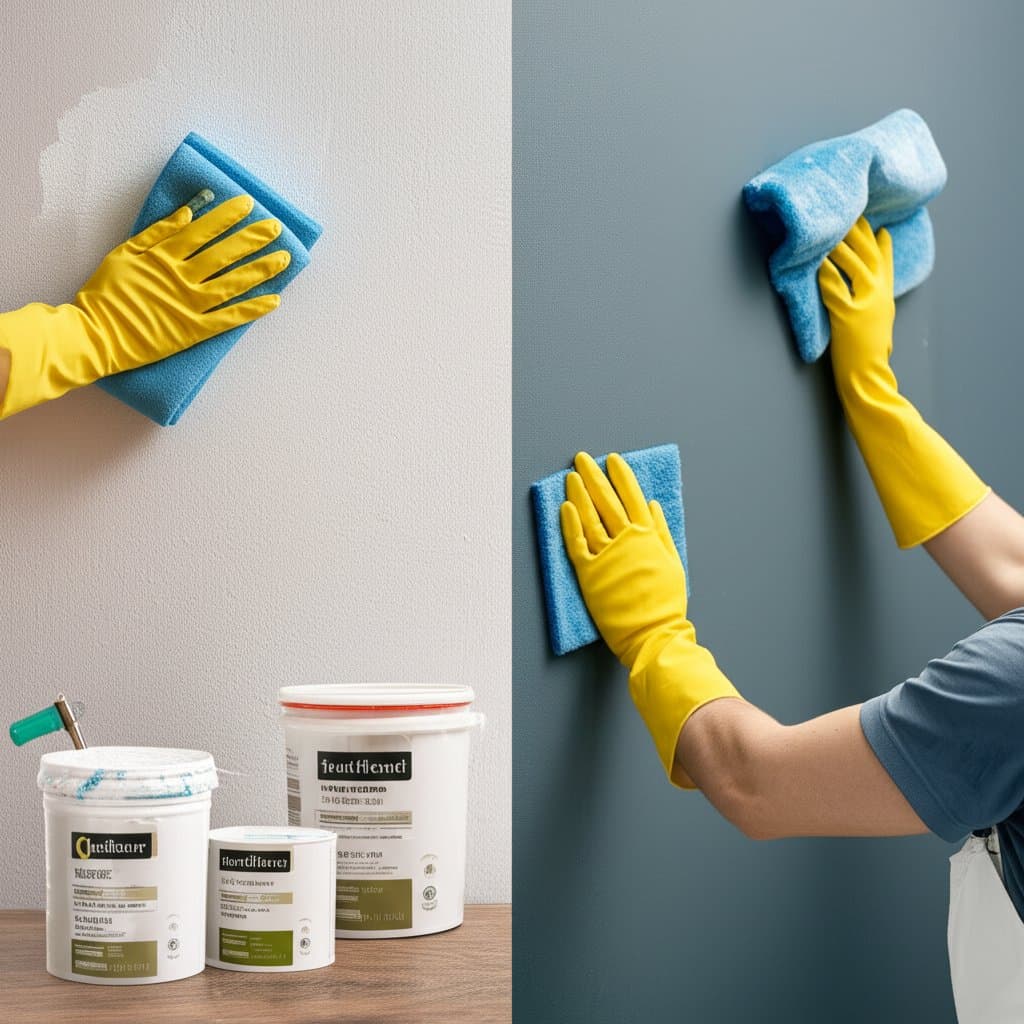Understanding the TSP Ban and Its Impact on Paint Preparation Costs
Environmental and safety regulations continue to evolve, altering surface preparation methods for painting projects. A significant development involves limitations on trisodium phosphate, or TSP, a traditional cleaner for removing contaminants before applying paint. These restrictions have elevated preparation expenses for professional contractors and homeowners alike, with increases reaching 30 percent. Grasping the reasons behind this change and identifying adaptation methods proves vital for accurate project planning and financial management.
Implications of the TSP Ban for Homeowners
For many years, TSP served as a primary agent for cleaning and degreasing surfaces prior to painting. It excelled at eliminating dirt, mold, and remnants of prior paint layers, ensuring optimal adhesion for fresh coats. Regulatory bodies now limit or prohibit TSP due to its phosphate content, prompting the adoption of environmentally friendlier options that carry higher price tags.
This transition affects not only the selection of cleaning products but also the duration of preparation tasks. Consequently, overall project budgets expand because of elevated material expenses, extended labor hours, and adjustments to established procedures. Homeowners benefit from recognizing these shifts early to avoid surprises during renovations.
Key Factors Influencing Paint Preparation Expenses
Identifying primary expense contributors enables better anticipation and control of costs. Below are the essential elements to consider.
Surface Condition
Surfaces with porosity or irregular textures demand repeated cleaning efforts. Buildup from oils, tobacco stains, or fungal growth necessitates supplementary treatments. Every additional process extends labor duration and boosts material requirements, directly impacting the budget.
Alternatives to TSP
Phosphate-free options, including those based on borax or natural citrus extracts, prioritize safety yet command premium prices per unit. These formulations frequently need specific mixing proportions or repeated uses, leading to greater overall consumption. Selecting concentrated versions can mitigate some volume-related costs.
Labor Requirements
Contemporary cleaners exhibit reduced potency compared to TSP, requiring more manual effort for equivalent cleanliness. Workers spend additional time on scrubbing and rinsing, which elevates the labor share of preparation expenses. Efficient tools, such as pressure washers, may offset this in certain scenarios.
Disposal and Regulatory Compliance
Handling wastewater from cleaning demands adherence to environmental guidelines. Systems for containment or chemical neutralization become necessary, introducing incremental fees. Contractors often incorporate these into quotes to ensure full compliance without hidden charges.
Regional Differences in Pricing
Locations enforcing rigorous local standards or facing supply constraints experience amplified material costs and prolonged timelines. Urban areas might incur higher fees due to transportation, while rural settings could benefit from lower labor rates. Researching local suppliers aids in cost optimization.
Assessing Value and Long-Term Returns
The TSP restrictions introduce immediate financial pressures, yet they deliver enduring advantages. Eco-friendly cleaners minimize pollutant discharge into waterways, safeguard ecosystems, and enhance interior atmospheres by reducing volatile emissions. Homeowners gain from healthier homes and surfaces that withstand wear longer.
Thorough preparation stands as a cornerstone of paint performance. A meticulously cleaned base can prolong the lifespan of coatings by multiple years, decreasing the need for frequent touch-ups. Initial investments in compliant methods often result in savings through superior durability and aesthetic results over time.
Strategies for Budgeting Under TSP Restrictions
Effective budgeting for paint preparation involves dissecting material and labor elements distinctly. Begin with an assessment of surface states and calculate the square footage involved. Apply an average preparation rate per square foot to generate an initial estimate, then factor in variables like soiling levels.
Incorporate a contingency of 10 to 15 percent to cover unforeseen challenges, such as concealed discoloration or additional sealing layers. For extensive undertakings, obtain itemized proposals that delineate cleaning, abrasion, priming, and application phases. Such breakdowns reveal the ban's specific influences and opportunities for efficiency.
Homeowners tackling multifaceted jobs may opt for staged execution. Prioritize zones with heavy use or humidity exposure, followed by secondary spaces as funds permit. This method spreads expenditures across periods while preserving high standards throughout.
Steps to Launch Your Paint Preparation Project
Initiate your project by conducting a preliminary inspection of all targeted surfaces. Document areas requiring intensive cleaning, such as kitchens or bathrooms, and gather quotes from at least three contractors experienced in regulatory compliance. Select products from reputable brands that specify phosphate-free compositions and verify their suitability for your substrates.
Assemble necessary equipment, including scrub brushes, buckets, and protective gear, to support either self-managed or professional efforts. Schedule work during moderate weather to facilitate drying and minimize disruptions. Track progress against your budget at each phase to make timely adjustments.
Frequently Asked Questions
What constitutes the typical cost escalation from the TSP ban?
Homeowners generally encounter a 20 to 30 percent rise in surface preparation fees, stemming from elevated prices for non-phosphate cleaners and the prolonged labor needed for comparable cleanliness.
Which elements primarily drive paint preparation expenses?
Core influencers encompass surface quality, the chosen cleaning agent type, effort demands, local pricing structures, and adherence to disposal protocols. Aged or intensely contaminated areas typically demand extended resources.
Is TSP usage permissible in certain locations?
Numerous jurisdictions curtail or forbid TSP application for ecological concerns, particularly proximate to aquatic environments. Designated substitutes bearing that label may qualify, though verification against regional mandates remains essential.
In what ways can costs decrease without compromising standards?
Conduct initial surface wiping, consolidate rooms into single assignments, and time projects for contractor off-seasons to trim expenses. Opting for versatile, high-concentration solutions further curbs material outlays.
Is self-preparation advisable, or should professionals handle it?
Independent efforts suit light duties or compact zones, yet experts excel in addressing substantial accumulations, uneven textures, or dampness issues. Their knowledge guarantees adhesion integrity and rule conformity.
When does scheduling paint preparation yield the lowest rates?
Periods outside peak demand typically offer reduced pricing and enhanced availability. Advance planning and prompt reservations lock in favorable terms, affording ample duration for detailed assessments.



